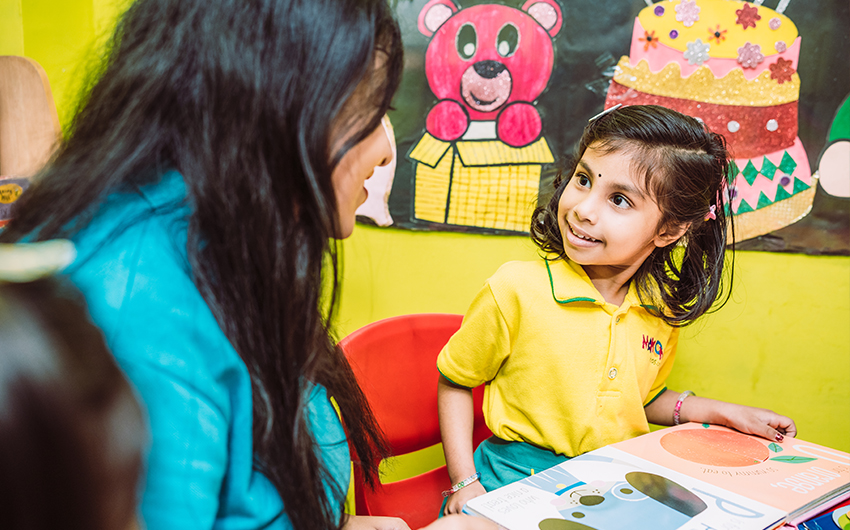As parents, caregivers, or educators, one of the most crucial responsibilities is ensuring the safety and well-being of children. Teaching them about the difference between good and bad touch is essential to this responsibility. Understanding these concepts helps children recognise and respond appropriately to uncomfortable situations, promoting their safety and mental well-being. And Makoons offers comprehensive learning on this topic, which is one of the best preschools in India.
What is Good Touch?
So, what is a good touch? Good Touch is any form of physical contact that makes a child feel safe, comfortable and loved. It is usually associated with affection, care, and support. Examples of good touch include:
- A hug from parents or loved ones.
- Holding hands while crossing the street.
- A pat on the back for encouragement.
- A friendly handshake.
These touches make the child feel secure and are usually part of a loving, caring relationship.
What is Bad Touch?
Bad Touch is any form of physical contact that makes a child feel uncomfortable, scared, or uneasy. It often involves inappropriate or unwanted contact, especially in private areas of the body. Examples of bad touch include:
- Someone touching the child’s private parts.
- Being forced to hug or kiss someone against their will.
- Any touch that makes the child feel confused, scared, or unhappy.
Bad touch can be an indication of inappropriate behaviour or abuse, and children must understand that it’s okay to say no and tell a trusted adult. It’s the opposite of what is good touch.
How to Make Children Aware of Good Touch and Bad Touch
Educating children about what is good touch and bad touch is a delicate but necessary conversation. Here are some strategies to help make children aware:
Open Communication
Create an environment where your child feels safe to talk about their feelings and experiences. Encourage them to express their emotions and assure them that they can come to you with any concerns.
Use Simple Language to Teach What is Good Touch & Bad Touch
Explain the concept of what is good touch and what is bad touch using age-appropriate language. Use terms they understand and avoid overcomplicating the discussion.
Teach Body Autonomy
Help children understand that their body belongs to them, and that they have the right to say no to any touch that makes them uncomfortable, even if it’s from someone they know.
Role-Playing to Teach What is Good Touch & Bad touch
Engage in role-playing scenarios to help children practice saying no and telling a trusted adult if they experience bad touch. This helps reinforce their understanding and confidence in responding to uncomfortable situations.
Educate About Safe Adults
Teach children how to identify safe adults they can trust, such as parents, teachers, or guardians. Emphasize that if they experience bad touch, they should immediately inform one of these trusted individuals.
Reinforce the Message at School to Teach What is Good touch & Bad Touch
Many of the best preschools in India incorporate lessons on good touch and bad touch into their curriculum. Partner with your child’s school to ensure these lessons are consistent and reinforced at home.
Importance of Awareness in Early Childhood
Early education about good touch and bad touch empowers children with the knowledge to protect themselves. It also plays a crucial role in preventing abuse and helping children feel secure in their surroundings. Play Schools and parents must work together to ensure children are equipped with the tools to recognize and respond to any inappropriate behavior. And at Makoons, we work on this aspect. This is among the best preschools in India.
FAQs
What should I do if my child experiences bad touch?
If your child experiences bad touch, it’s important to stay calm, listen to them carefully, and assure them they did the right thing by telling you. Contact a trusted authority or professional for further support.
How can schools help in teaching children about good touch and bad touch?
Many of the best preschools in India incorporate lessons on body safety, including the difference between good touch and bad touch, as part of their curriculum. Schools can play a significant role in reinforcing these important lessons.
What should I do if my child is too shy to talk about their feelings?
Create a safe and supportive environment where your child feels comfortable discussing their feelings. Regularly check in with them and encourage open communication without pressuring them.

